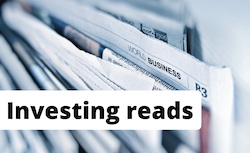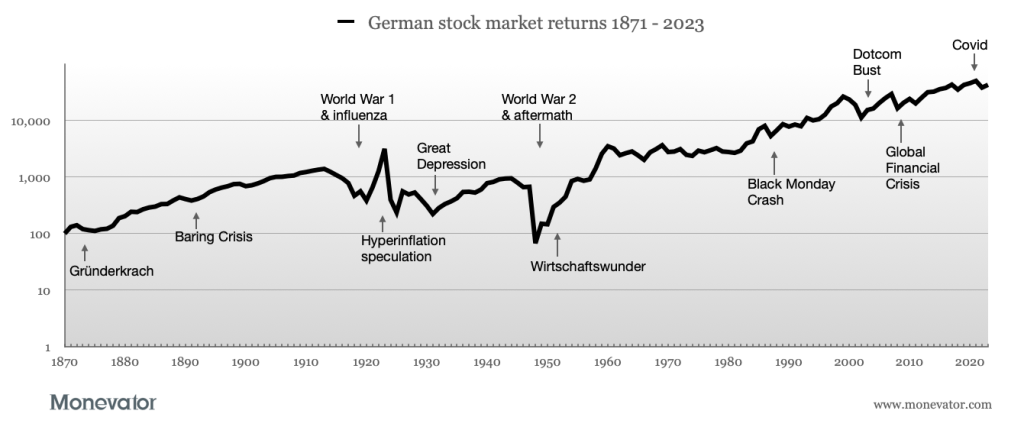
The joy of a stocks and shares ISA is that it legally protects your investments from tax on growth and income. That’s more important than ever as tax-free allowances are being slashed or suppressed across the board.
If you hope to build wealth through investing then shielding your gains from unnecessary tax must be a core part of your strategy.
ISAs are tax-efficient ‘wrappers’ created by the UK government to encourage saving. Any investment inside the ISA wrapper can grow tax-free as long as you don’t break the rules.
Stocks and shares ISAs are provided by high street banks, fund managers such as Vanguard, financial advisors, and specialist online brokers or platforms.
You get a new ISA allowance every tax year. You can put the entire amount into a stocks and shares ISA if you wish.
£20,000 is the maximum amount of new money you can pay into a stocks and shares ISA during the tax year 2022-23. (£9,000 in a JISA1). The same limit will apply from the new tax year: 2023-2024. The tax year runs from 6 April to 5 April.
The ISA deadline is 5 April every year. That’s the last day of the current tax year you can use up your allowance. You get a new allowance from 6 April. But you can’t roll over unused ISA capacity from the previous year.
If you’ve left things late then know it’s enough to have the cash taken off your debit card and inside your ISA by close of business on 5 April. You don’t need to have actually invested the cash for it to qualify for tax-free protection.
Why open a stocks and shares ISA?
A stocks and shares ISA combines three critical features:
The ability to invest in assets that are expected to grow faster than cash.
Legally recognised tax protection. You don’t have to worry about HMRC handing you a large bill because you invested in some sketchy offshore caper.
Instant accessibility. You can invest in liquid holdings that can be sold to meet unforeseen difficulties or other life events that occur before you reach pension age.
In short, ISAs are a private investor’s top tax-protection shield, along with pensions.
Find out more about the benefits of ISAs vs SIPPs.
Which taxes are not paid in a stocks and shares ISA?
The main taxes that you do not have to pay on investments in a stocks and shares ISA are:
Income tax on interest – as earned on bonds and bond funds.
Dividend income tax – as paid by shares, equity funds, and property funds.
Capital gains tax on profits – as paid on the growth in value of taxable assets when you sell them.
Inheritance tax – although it’s complicated, and depends on the ISA passing to a spouse or civil partner who’s not been estranged from the deceased.
Interest and dividends paid straight out of your ISA are not taxed.
ISA withdrawals aren’t taxed, unlike with a pension. (You will pay a penalty if you withdraw from a Lifetime ISA at the wrong time).
Even more reasons to use an ISA
Investing in a stocks and shares ISA is a no-brainer, even if you think your holdings are too small to be caught up in the taxman’s net.
Many providers charge you no more for holding an ISA than they do for keeping your assets in a taxable account.
Though most of us start out small, your investments can grow surprisingly rapidly. Over the years you will outstrip your ability to manage everything within your tax allowances.
Taxes can go up. On top of explicit increases in dividends and capital gains, other UK tax thresholds are being frozen until April 2028. This is a stealth tax, so use your tax shelters while you can.
You don’t even have to tell HMRC about your ISA transactions. (Believe me, if you ever have to fill in a tedious capital gains tax form, you’ll fall to your knees with thanks that all your investments are in an ISA.)
ISAs can be mission critical
If you’re on a mission to achieve financial independence (FI) before your minimum pension age2 then stocks and shares ISAs will accelerate you towards your goal.
The best course for most will be to combine ISAs and SIPPs to achieve the FI dream. ISA investments can bridge the gap between your FIRE3 date and your minimum pension age.
The minimum pension age for accessing your personal pension is currently 55. But the government has confirmed it will rise to age 57 at some point in 2028. Thereafter the minimum pension age is due to be set to ten years before your State Pension age.
A stocks and shares ISA is also a great place to stash your pension’s 25% tax-free lump sum so that you can expand the amount of income you can take without being pushed into a higher tax bracket.
Investment ISA types
You can hold investments in the following types of ISA:
Stocks and shares ISA
Lifetime ISA (choose a stocks and shares version not cash)
Junior ISA (again, shares not cash)
ISA providers call stocks and shares ISAs by various names including:
Shares ISA
Self-Select ISA
Ready Made ISA
Share Dealing ISA
Investment ISA
Workplace ISA
AIM ISA
They’re all stocks and shares ISAs. But they are given different marketing labels depending on how the provider is trying to appeal to consumers.
A stocks and shares ISA may also be a flexible ISA. This means you can potentially replenish withdrawals you make without running down your ISA allowance.
You can invest in a stocks and shares ISA from age 18 onwards by opening an account with your chosen platform (bank, fund manager, IFA or similar).
We’ve put together a list of providers in our cheapest online broker table. These providers enable you to invest in a DIY stocks and shares ISA. You can see who offers a flexible stocks and shares ISA in the left-hand column.
Stocks and shares ISA rules
You can:
Have as many stocks and shares ISAs as you like, so long as you don’t put new money into more than one per tax year.
Split money across a stocks and shares ISA, lifetime ISA, cash ISA, and innovative finance ISA, provided you don’t put in more than £20,000 between them,4 nor open more than one of each type, in the same tax year.
Transfer money from previous years’ ISAs (of any type) into multiple stocks and shares ISAs with any provider. And vice versa.
Transferring old ISA money or assets does not:
Use up your ISA allowance for the current tax year
Break the one-type-of-ISA-a-tax-year rule
You can transfer any amount of your previous years’ ISA’s value. Either transfer the whole lot into one ISA, transfer a portion of it into several ISAs, or do any other combo you desire.
How to transfer an ISA
You must transfer the whole balance if you’re transferring your current tax year’s stocks and shares ISA
You can transfer it into a different type of ISA – provided you haven’t already opened one of that type this tax year.
In that scenario, you can also open a new stocks and shares ISA later that tax year.
This is an exception to the one-type-of-ISA-a-tax-year rule.
It works because transferring from one type of ISA to another means that you now count as subscribing to the receiving ISA type.
For example, you transfer from a stocks and shares ISA to a cash ISA. You can now open a new stocks and shares ISA without falling foul of the ‘one type of ISA per tax year’ rule.
Always transfer an ISA to retain the tax-free status of its assets. Don’t withdraw cash and plop it in a new ISA – that uses up your ISA allowance!
Transfer assets in specie (this avoids them being sold to cash) if you are given the option. In specie moves are also known as re-registration.
See our comprehensive guide on the ISA allowance rules.
How to transfer a stocks and shares ISA.
Other ISA funding rules
You can’t invest new money in a workplace ISA and a stocks and shares ISA.
If you invest £9,000 per tax year in a JISA for each of your children that does not reduce your own ISA allowance.
Most stocks and shares ISAs have minimum required contributions. They are often as low as £50.
Replacing cash withdrawn from a flexible stocks and shares ISA does not use up your ISA allowance. However you can’t replace the value of shares, or other investment types, that you moved out of the account.
It’s worth checking your ISA’s T&Cs whenever you choose a product. Not all of the government’s ISA rules are mandatory. ISA managers do not have to support all features.
Best ISA funds
The main investment vehicles you can include in a stocks and shares ISA are:
Mutual funds such as OEICs and Unit Trusts including money market funds
Exchange Trade Products such as ETFs and ETCs
Investment trusts
Individual company shares
Individual government and corporate bonds
The government maintains a comprehensive list of the complete menagerie.
If you are new to investing then our passive investing HQ can explain more.
Remember that the assets listed above are riskier than cash – you can get back less than you put in.
It’s worth regularly reflecting on how much risk you might be able to handle as you build your investing portfolio.
Index trackers are an investment vehicle that combine simplicity and affordability. They are recommended by some of the best investors in the world – and us.
See our list of particularly useful low-cost index funds and ETFs.
The Financial Services Compensation Scheme (FSCS) provides some investor compensation should your ISA or investment manager go belly up. Do take a look at the link. The scheme is convoluted, to say the least.
Stocks and shares ISA costs
You can expect to pay stocks and shares ISA investment fees that cover:
Your ISA provider’s management costs
The cost of owning investment funds
Dealing fees for trading investments in the open market
Fees for special events such as transferring your ISA
All fees should be transparently laid out by your ISA provider and investment fund managers.
Charges that can be paid from monies held outside of your ISA, if your provider agrees, include:
ISA provider’s management costs
Fees for special / one-off events, such as closing your account
Charges that must be paid from funds held within the ISA include:
Dealing fees
The cost of owning investment funds
A flexible ISA doesn’t enable you to replace the cost of ISA charges against your allowance.
Beware of transfer fees that can rack up when your provider charges you ‘per line of stock’. For example they might charge you £15 per company stock and investment fund that you own.
Tax efficiency
You can’t transfer most unsheltered assets straight out of a taxable account and into your stocks and shares ISA wrapper.
You generally have to sell the assets first and buy them again inside your ISA. This is colloquially, if not popularly, known as Bed and ISA.
Selling an unsheltered investment can cost you capital gains tax on your profits. But you can duck that by staying within your capital gains tax allowance and defusing your capital gains.
You can transfer employee share save scheme shares directly into an ISA in some circumstances.
If you want to invest more than you can squeeze into your annual ISA allowance, then research tax efficient investing to avoid building up a capital gains tax time bomb.
Inheriting a stocks and shares ISA
Your surviving spouse or civil partner can receive your ISA assets tax-free upon your death. Although do check that the T&Cs of your particular stocks and shares ISA allow for it to remain tax-free and invested after your passing.
++Monevator Minefield Warning ++ The rules below apply equally to spouses and civil partners but we’ll just refer to spouses for brevity’s sake. Unmarried couples do not benefit from these special inheritance rules. See our article on how unmarried couples can protect their finances.
A surviving spouse is given a one-off ISA allowance that equals the value of your ISAs.
This is called the Additional Permitted Subscription (APS).
A spouse uses the APS to add the value of their deceased partners’ ISAs into ISA accounts held under their own name.
For example, if you die with ISA assets worth £50,000, then your spouse is entitled to an APS of £50,000.
Plus they get their usual annual ISA allowance on top.
The APS effectively means your spouse benefits from the tax-free status of your ISA assets after your death.
The APS is worth the higher of:
Your ISA’s value at the date of your death
Or the value of your assets when the account is closed. (This assumes no part of the APS has been used up to that point)
Surprisingly, your spouse still benefits from the APS even if your ISAs are willed to someone else.
In this scenario, your partner can fund their APS from their own money or other inherited assets.
That said, under most circumstances, a surviving spouse will fill their APS simply by transferring their deceased partner’s ISA assets.
The APS must be used no later than:
Within three years of the date of your death
OR
Within 180 days of the completion of the administration of your estate, if that’s later
The surviving spouse does not have to wait until the estate is settled to use the APS though.
Managing an inherited ISA
Assets within the deceased’s ISA can be managed by their personal representatives before it is closed. However they can’t make new contributions into the account.
The ISA continues to grow tax-free until the earlier of:
Completion of the administration of the estate.
Closure by your executor
Three years and one day after your death. The account is automatically closed at this point
If you have multiple ISAs with different providers then your spouse’s APS is divided between them according to the value of the ISAs lodged with each firm.
Your spouse must claim each portion of their APS from each ISA provider involved.
Again, check that the various providers of your ISAs subscribe to these rules as described. Terms can vary.
More ISA inheritance rules
(Because there isn’t enough to think about already…)
The other main wrinkle is that your spouse can only receive assets in specie from a stocks and shares ISA by transferring them to the same provider that you held them with.
They can then transfer the assets to another manager once held in their own name.
Another clause is that assets transferred in specie must be the ones held on the date you were told of the death of the investor. (Some might see this rule as pretty heartless. However I don’t know about you but the very first thing I want to know after hearing the news of my partner’s death is the list of non-cash assets they’ve got tucked in their ISAs. Let’s cut to the chase!5)
In specie transfer must be made within 180 days of the assets passing into the beneficial ownership of the surviving spouse.
Your ISAs do not pass on their tax-free status to anyone other than your spouse.
The tax benefits do not apply if you and your surviving partner were not living together on the date of death, or were legally separated, or in the process of becoming legally separated.
AIM-ing for even more
Some wealth managers and platforms market AIM ISAs that twin the advantages of a stocks and shares ISA’s tax efficiency with the inheritance tax-elusiveness of Alternative Investment Market (AIM) shares.
Some but not all AIM shares qualify for inheritance tax relief under peculiar government rules that are subject to change.
An AIM ISA is:
Risky
Not guaranteed to work out
Subject to high minimum investments, which add a naughty elite frisson to the escapade
Check out the links above if you need ‘em.
Stocks and shares ISAs aren’t just for the rich
Some people think ISAs are a rich person’s concern. That’s because few have experience of paying capital gains tax, or even income tax on share dividends.
However even modest savings can really add up to a big portfolio in a bull market, at which point the tax protection is invaluable.
Shielding your investment returns from tax like this can make a huge difference to your end result from investing.
Finally, if you want to optimise your ISA to the max then take a look at our cheapest stocks and shares ISA hack.
Take it steady,
The Accumulator
Junior ISA for kids.The moment you can first crack open your personal pension.Financial Independence Retire Early.Or more than £4,000 in the case of the lifetime ISA.Sarcasm.
The post Stocks and shares ISAs: everything you need to know appeared first on Monevator.



